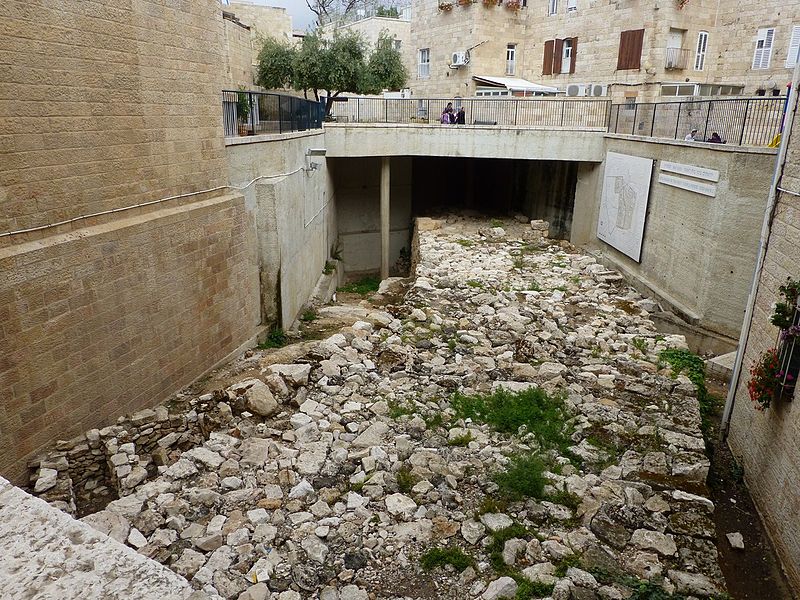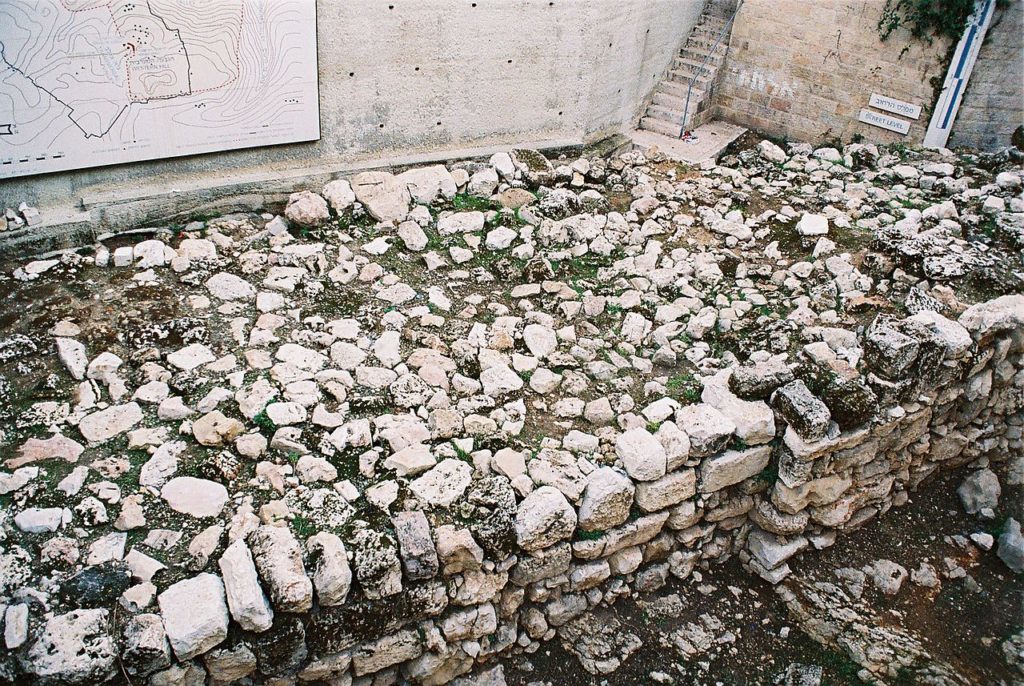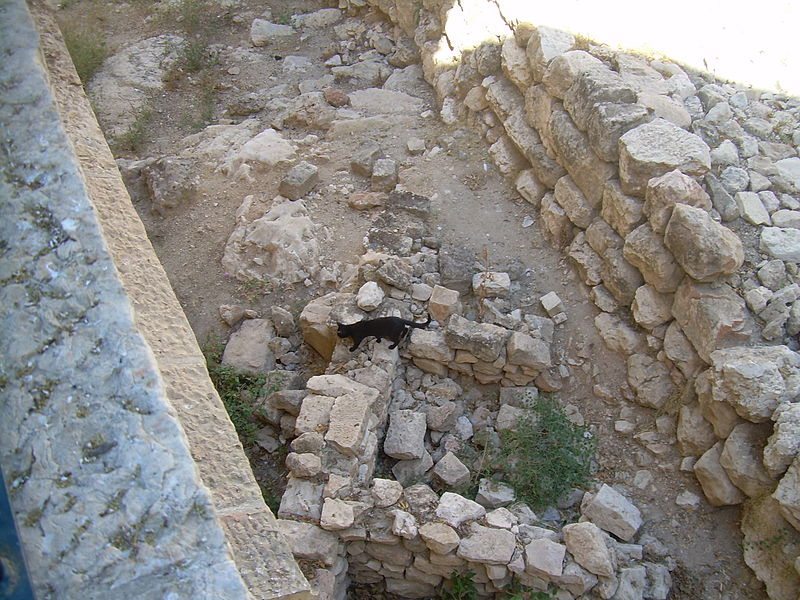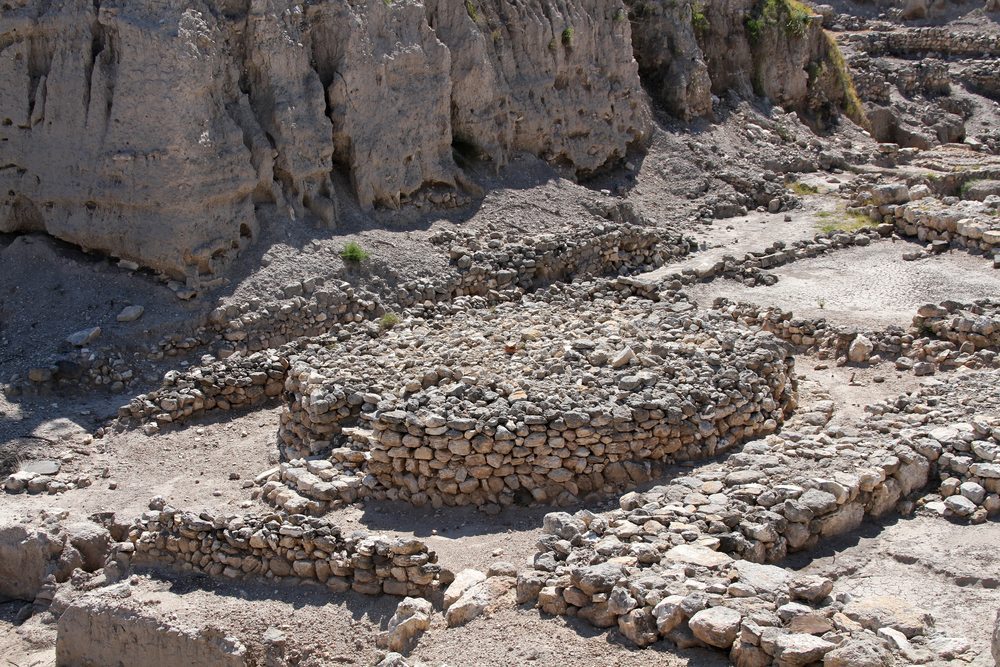One of the most important First Temple Era archaeological finds in Jerusalem is a massive stone fortification structure called the Broad Wall. It was built by King Hezekiah in the late 8th century BC prior to the Assyrian assault on Jerusalem (701 BC) and can be seen today in situ in the Jewish Quarter of the Old City. In addition to being impressive for its sheer physical size (width: 7.5 meters /23 feet), this find is remarkable because it is directly mentioned in several places in the Hebrew Bible. Nehemiah refers to the restoration of Jerusalem in 445 BC “as far as the broad wall (הַחוֹמָה הָרְחָבָה)”. This is the source of the name we use for this site today. Likely, this name was chosen because the wall expanded (רחב, rahav) the size of the city considerably, not because the wall itself was broad. We might want to consider calling it the Broadening Wall rather than the Broad Wall. Another biblical reference to the wall is found in 2 Chronicles, which refers to Hezekiah’s preparations as follows:
Then he worked hard repairing all the broken sections of the wall and building towers on it. He built another wall outside that one and reinforced the terraces of the City of David. He also made large numbers of weapons and shields. (2 Chron. 32:5)
The original Hebrew text of this verse contains a whimsical play on words: Hezekiah (יְחִזְקִיָּהוּ), whose name means “God is strong”, both “worked hard” (וַיִּתְחַזַּק) and “reinforced” (וַיְחַזֵּק). Two verses later the king instructs the inhabitants of the city “be strong and have courage” (חִזְקוּ וְאִמְצוּ). All these words are based on the same three-letter Hebrew root: חזק (hazak), which means “strong”. So perhaps it would make more sense to call this the Strong Wall rather than the Broad Wall. Many scholars believe that the section of the wall seen in the image above is actually the “other wall outside that one” (וְלַחוּצָה הַחוֹמָה אַחֶרֶת) intended to lure the Assyrians into a spot where it was easier for the Judahites to fire arrows upon them. But the most important biblical passage that mentions the Broad Wall is Isaiah’s vivid description of Hezekiah’s construction project:
You counted the houses of Jerusalem, and you broke down the houses to fortify the wall.
וְאֶת-בָּתֵּי יְרוּשָׁלִַם סְפַרְתֶּם וַתִּתְצוּ הַבָּתִּים לְבַצֵּר הַחוֹמָה (Isaiah 22:10)
Isaiah was highly critical of Hezekiah’s plan to prepare for the Assyrian attack. The king chose to build this wall in the Transversal Valley (גיא צולב), a small east-west wadi to the north of the main portion of the city inhabited the 8th century. Hezekiah felt that this was the most logical place to erect fortifications, even if it meant destroying the homes of his own citizens. The prophet Isaiah believed that the king should rely on God’s protection rather than unjustly destroying people’s homes to build a futile wall which the enemy would easily breach. The really noteworthy point is that Isaiah’s words (“you broke down the houses”) have been precisely confirmed by the physical remains. Archaeologists who excavated this site in 1970s found the foundations of residential homes beneath the Broad Wall, as can be seen in the two photograph below.

Today you can see this section of the Broad Wall left exposed in the heart of the Jewish Quarter of the Old City of Jerusalem.
The original Hebrew text of Isaiah uses the word נתץ (nataz), which does not just mean “to break down”, but “to utterly demolish” or “to flatten”. The word is used particularly frequently in the Hebrew Bible with regard to the demolition of architectural structures made out of stone masonry, particularly idolatrous religious edifices. For example, Deuteronomy contains a command to demolish the Canaanite places of idol worship once the Israelites have entered the Land:
Destroy completely all the places on the high mountains, on the hills and under every spreading tree, where the nations you are dispossessing worship their gods. Break down (נִתַּצְתֶּם) their altars, smash their sacred stones and burn their Asherah poles in the fire; cut down the idols of their gods and wipe out their names from those places. (Deut. 12:2-3)
This passage uses the verb nataz to refer to the total dismantling of a stone altar. In the period of the Hebrew Bible, sacrificial altars were made out of stones using the same type of masonry construction seen in stone walls. One of the most impressive examples of such an altar was found deep within Tel Megiddo. It is 26 feet in diameter and dates to the Early Bronze Age II-III (2900-2300 BC).
According to Deuteronomy, breaking the idolatrous structure is not enough. The stones must be removed one by one and reused to build a new structure so that the altar is unusable. This flattening is apparently the same action performed by Hezekiah on people’s homes in Jerusalem in 701 BC. The fact that this can still be seen under the Broad Wall today makes this a rare example of the words of the Bible being directly confirmed by an archaeological find. What is more, if we take a closer look at Isaiah’s words in Hebrew and read them through the lens of the archaeological record, we understand his message better. Isaiah did not really think that Hezekiah should simply trust in God and leave the city unfortified. But he was offended by the violence of the destruction of people’s homes and the reuse of the stones to form the wall. He was shocked by the efficiency and brutality of Hezekiah’s fortification plan, as though he was carrying out a divine command to demolish idolatrous shrines.
In the end, Jerusalem was spared the horrific destruction that dozens of the cities of Judah suffered. But it is unclear whether it was the Broad Wall that successfully defended the city. King Sennacherib of Assyria besieged the city, famously trapping Hezekiah inside the walls “like a captive bird” according to his own military records. Sennacherib eventually returned to Nineveh without conquering Jerusalem. Why? The Bible attributes this to two seemingly contradictory factors. First, Hezekiah agreed to pay the Assyrians a tribute of 300 talents of silver and 30 talents of gold, which required stripping the treasuries of the Jerusalem temple and palace (2 Kings 18:13-16). Second, an angel of the Lord miraculously struck the Assyrian army killing 185,000 (2 Kings 19:35). We can only hope that one day archaeology with further clarify the mysteries of this most crucial chapter in Jerusalem’s history.








Join the conversation (No comments yet)